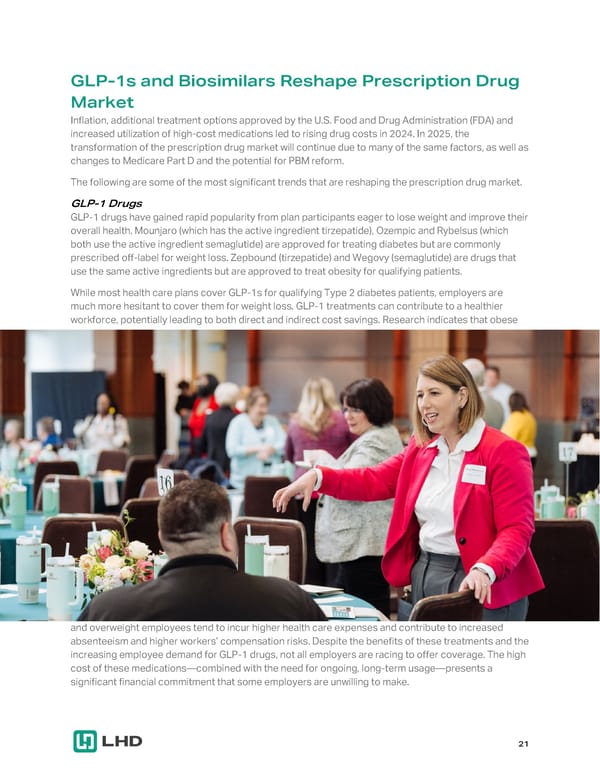GLP-1s and Biosimilars Reshape Prescription Drug Market Inflation, additional treatment options approved by the U.S. Food and Drug Administration (FDA) and increased utilization of high-cost medications led to rising drug costs in 2024. In 2025, the transformation of the prescription drug market will continue due to many of the same factors, as well as changes to Medicare Part D and the potential for PBM reform. The following are some of the most significant trends that are reshaping the prescription drug market. GLP-1 Drugs GLP-1 drugs have gained rapid popularity from plan participants eager to lose weight and improve their overall health. Mounjaro (which has the active ingredient tirzepatide), Ozempic and Rybelsus (which both use the active ingredient semaglutide) are approved for treating diabetes but are commonly prescribed off-label for weight loss. Zepbound (tirzepatide) and Wegovy (semaglutide) are drugs that use the same active ingredients but are approved to treat obesity for qualifying patients. While most health care plans cover GLP-1s for qualifying Type 2 diabetes patients, employers are much more hesitant to cover them for weight loss. GLP-1 treatments can contribute to a healthier workforce, potentially leading to both direct and indirect cost savings. Research indicates that obese and overweight employees tend to incur higher health care expenses and contribute to increased absenteeism and higher workers’ compensation risks. Despite the benefits of these treatments and the increasing employee demand for GLP-1 drugs, not all employers are racing to offer coverage. The high cost of these medications—combined with the need for ongoing, long-term usage—presents a significant financial commitment that some employers are unwilling to make. 21
 2025 Employee Benefits Market Outlook Page 20 Page 22
2025 Employee Benefits Market Outlook Page 20 Page 22